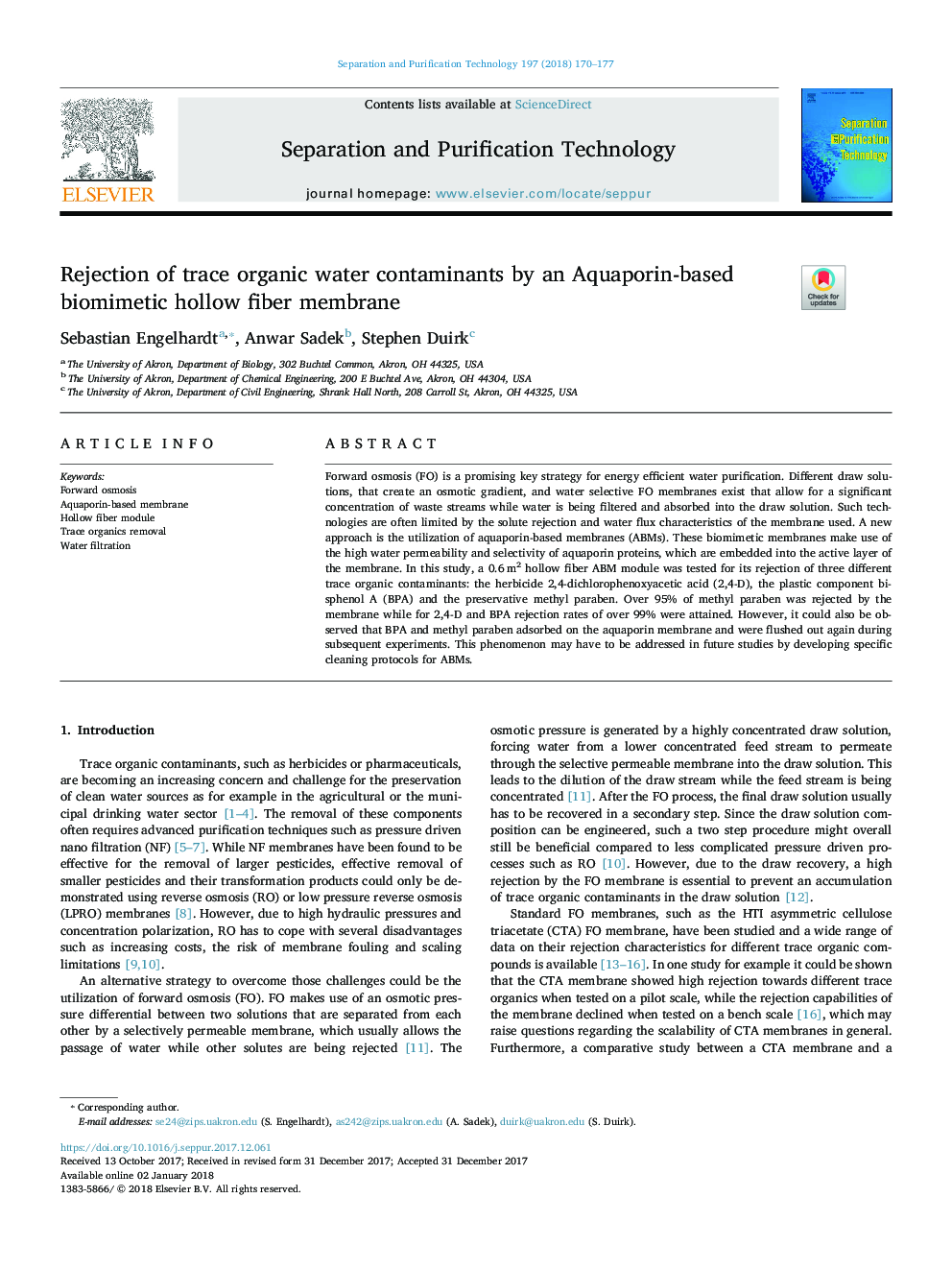| Article ID | Journal | Published Year | Pages | File Type |
|---|---|---|---|---|
| 7043916 | Separation and Purification Technology | 2018 | 8 Pages |
Abstract
Forward osmosis (FO) is a promising key strategy for energy efficient water purification. Different draw solutions, that create an osmotic gradient, and water selective FO membranes exist that allow for a significant concentration of waste streams while water is being filtered and absorbed into the draw solution. Such technologies are often limited by the solute rejection and water flux characteristics of the membrane used. A new approach is the utilization of aquaporin-based membranes (ABMs). These biomimetic membranes make use of the high water permeability and selectivity of aquaporin proteins, which are embedded into the active layer of the membrane. In this study, a 0.6â¯m2 hollow fiber ABM module was tested for its rejection of three different trace organic contaminants: the herbicide 2,4-dichlorophenoxyacetic acid (2,4-D), the plastic component bisphenol A (BPA) and the preservative methyl paraben. Over 95% of methyl paraben was rejected by the membrane while for 2,4-D and BPA rejection rates of over 99% were attained. However, it could also be observed that BPA and methyl paraben adsorbed on the aquaporin membrane and were flushed out again during subsequent experiments. This phenomenon may have to be addressed in future studies by developing specific cleaning protocols for ABMs.
Related Topics
Physical Sciences and Engineering
Chemical Engineering
Filtration and Separation
Authors
Sebastian Engelhardt, Anwar Sadek, Stephen Duirk,
